Growing Peppers from Seed to Harvest
April 23rd, 2021 | Categories
If you’re looking for an easy to follow and informative guide to tell you all that you need to know to grow sweet peppers – like bell peppers – at home from seed to harvest, then look no further. Sweet peppers are super popular across the UK for their versatility, nutrients, and flavour. Another name for sweet peppers is Capsicum, Capsicum annum to be precise, which is the same species as most commonly grown chillies. So why aren’t sweet peppers hot like chilli peppers you ask. Well, sweet peppers do not have the compound called capsaicin, which produces heat measured in chilli peppers by the Scoville scale. Different chilli pepper varieties have different levels of the compound, so they have different heat scores, whereas sweet peppers come in at 0 or close to it.
Peppers are also fruits like tomatoes, because they come from a plant, despite being used like a vegetable in our meals. Just a little pepper trivia for you. Growing sweet peppers at home is very straightforward for experienced and new gardeners alike. Usually, once they are planted, they need extraordinarily little attention. But, with some more care and attention, they’ll really flourish. Growing from seed however requires a little more concerted effort, but rest assured it is all very uncomplicated. One thing to note though, peppers are tropical fruits and so to really thrive they will need to be grown inside a greenhouse or indoors. Many areas of the UK are not consistently warm enough for a long enough period which shortens their growing season.
If you just go for it and plant outdoors, it can affect the final harvest, or provide none at all, so they really need the consistent warmth a greenhouse or planting indoors can provide. This guide is specifically for those who wish to grow peppers outside in a greenhouse in the garden. We’ll cover everything you need to do to from growing your seedlings, to preparation through to harvest and storage. Ready to find out how to start growing your own sweet peppers? Then let’s go!
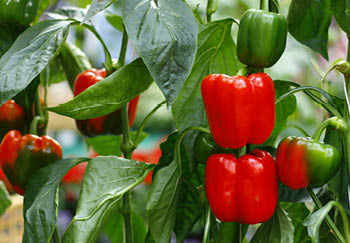
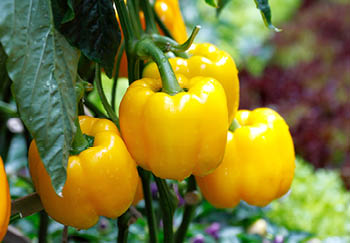
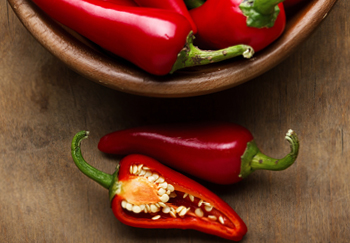
Why Grow Your Own Peppers at Home?
Like most fruit and veg in the supermarket the sweet peppers we buy are grown with a focus in longevity at the expense of things like flavour. They’re also subject to numerous pesticides, fertilisers and chemicals to ensure a successful crop. All done from a commercial point of view. So, growing at home, is hands down better for you and you’ll produce healthier, nicer tasting peppers too. It’s also more economical and should work out cheaper for you in the medium to long run. Constantly buying peppers in the supermarket isn’t cheap. If you’re an avid pepper purchaser then calculate how many you buy over the course of a year and it might surprise you. A single plant cared for well should produce up to 20 peppers, some produce more.
Another great point is the variety for you to choose from. There are more sweet peppers out there than the eponymous green, yellow or red bell peppers you see in supermarkets. There are a variety of different types with their own colours, shapes, sizes and unique flavours. But even if you simply want to grow your own fresh bell peppers at home, we can guarantee a noticeable flavour difference. You’ll get more of the goodness too. Peppers are full of vitamins A and C, potassium, folic acid, and are a source of fibre. They’re also very easy to grow and suffer from less diseases than other vegetables. With so many good reasons it’s hard to come up with counters not to give growing them a go.
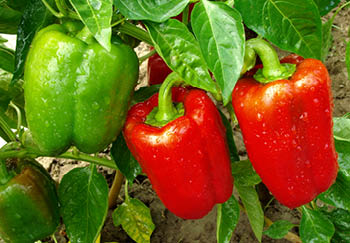
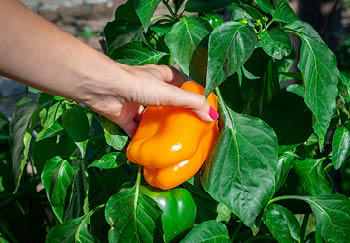
What Variety of Peppers Should You Grow?
It’s probably really nice and sweet bell peppers you want to grow, but if you want to explore other specific options for colour, shapes, or flavours, you can. There are a few varieties of sweet peppers to choose from:
Atris
This one is a good choice if you are after a particularly good cropper without losing flavour and colour. The Atris variety is pointy, almost horn-like in its shape.
Corno di Toro Rosso
Long, pointy red peppers that can grow up to 20cm long. They can also be harvested when they are green. They have a lovely full flavour that’s sweet and crisp.
Mohawk
This one produces medium sized peppers that ripen from a dark green to bright yellow with a lovely flavour. The plant is a dwarf plant which means this is good one for pot grown peppers.
Redskin
A dwarf pepper variety producing short stumpy peppers but with good yields. Also produced well on a windowsill or in a conservatory.
Sweet Chocolate
A rather unique chocolate-brown sweet bell pepper. Specifically bred for more difficult climates. The unique colour comes from a purple skin that overlays the traditional red skin and is great for roasting.
Sweet Spot
Attractive, long, slim peppers that look like chillies and ripen from pale yellow-cream to bright orange-red. A good cropper.
Topgirl
A fast cropping, medium sized, almost beef tomato like pepper. Great for stuffing with a lovely flavour. Also good for pot growing.
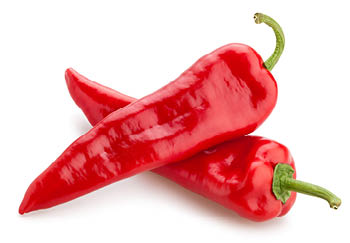

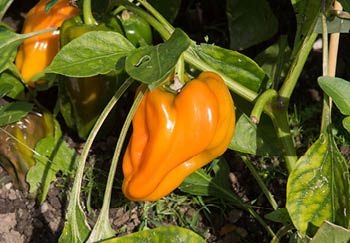
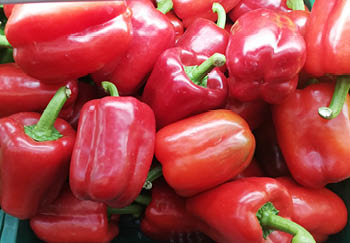
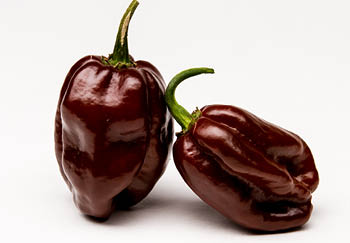
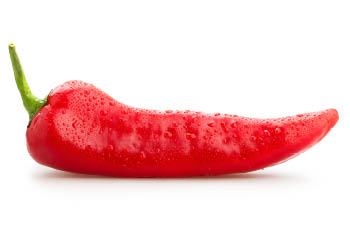

How to Start Growing Peppers
Now you know a bit more about peppers you’re almost ready to get started growing your own at home in a greenhouse. It pays to know what to do in advance so read through our guide, get up to speed, and then when you’re ready to go, get started. We’ll take you through growing from seed to harvest but you can also grow from young plants which are available from any good garden centre when in season. More on that next.
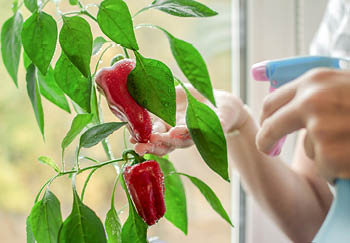
Growing Peppers from Young Plants
If you don’t want to go to the trouble of sowing your own seeds, there’s another way. You can simply buy varieties as young plants from any good garden centre when in season. The great thing about this is the effort to cultivate young seedlings has been done for you. All you have to do is plant them in their final positions. However, it’s super easy to grow from seed and doesn’t take much effort at all. We encourage you to try! If you do opt for purchasing young plants, you can skip the sections with information on growing from seed below.
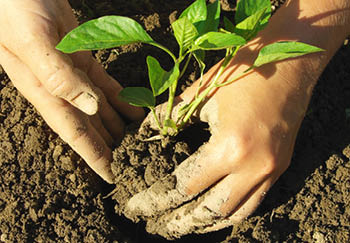
Growing Peppers from Seed
Starting off from seed? Good on you! You can buy most seed varieties throughout the year. However, the best time to start sowing your seeds will be indoors from as early as January if the conditions are right.

What You Will Need
Before you begin, gather these items. If you don’t have them then investing in them for future gardening projects will be more than worth it:
Pepper Seeds
Of course. Purchase the sweet pepper varieties you wish to grow.
Greenhouse
An essential part of growing peppers. Peppers need the warmth and sunshine a greenhouse typically provides. If you don’t have one there are cheaper options available now. However, if you plan to grow lots of your own fruit and veg then investing in a proper greenhouse will pay dividends over years.
Starter Pots or Containers
You’ll need some small starter pots or containers to grow your seedlings in. Options for use are widely available. In terms of the amount if you want a plentiful harvest, you’ll have to grow multiple plants.
Heat Mat or Propagator
The seeds should sit somewhere warm (above 20°C) with lots of sun, like a sunny windowsill in a warm room. You’ll be starting the process off in January so it might be hard to keep a room above the ideal temperature consistently which will slow things down. To really help get things going we advise purchasing a heat mat or propagator, both can be picked up fairly cheaply, and this will ensure things move along well.
Larger Containers or Beds
When your seeds have grown into seedlings, or young plants, they’ll have to be transplanted to larger containers, or possibly beds in your greenhouse. They’ll need extra room to grow to establish a root network so they can produce lovely, sweet peppers for you. They’ll need to have a depth of at least 15cm, ideally something like 30cm.
Compost
A good quality multi-purpose vegetable compost will do the trick and provide lots of nutrients while your seeds and plants grow.



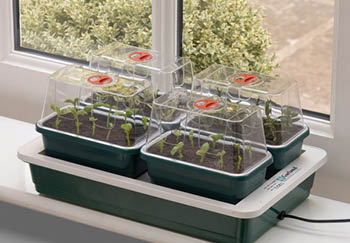
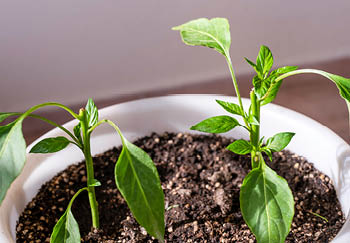
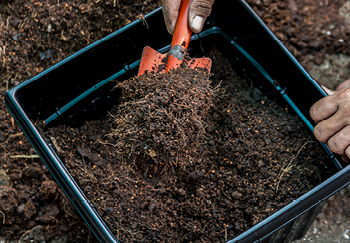
General Growing/Harvesting Timescale for Peppers
The growing season for peppers is from January to September. Peppers generally need a long growing season and from seed you will start the process off sometime in January so long as you can meet the right conditions. This depends on you being able to keep them warm consistently, so if you don’t have a greenhouse, heat mat/propagator you may need to wait until it’s much warmer, depending on where you are in the UK. You can sow seeds up until early April, but it means your peppers won’t be ready for harvest until later in the season. Starting the process off early means you could have peppers producing as soon as late May or June depending on the varieties you are growing too. So, consider all the factors and get a good idea of your plan ahead of time.
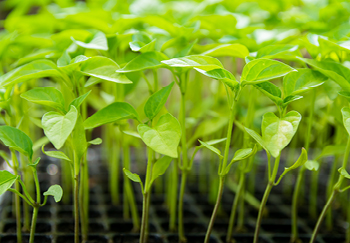
Sowing Seeds & Growing Seedlings
So, by now you’ve got your seeds, small pots, ideally have a great sunny position in the house, and you have a heat mat/propagator ready to go to maintain a consistent temperature, as well as your compost. First thing, fill your starter pots with the compost right to the top, and place a seed in each to a depth of about 5cm. Give them a water but only to make the soil moist, not overly wet, place the pots on your heat mat or in your propagator, and leave them in position. For the longest growing season, you will ideally do this around January/early February.
The next job is to keep the soil lightly moist with consistent watering over the coming days. You’ll notice little sprouting seedlings from 8 – 10 days later. Though if it takes a little longer don’t worry, they’ll appear. Top tip, as the seedlings appear, if you keep the soil on the drier side, it will encourage the roots to develop more. Continue to care for them until they are approximately 2cm – 3cm tall. This is your signal to transplant them to their final spot to fully grow and produce lots of lovely peppers. Bear in mind also to only transplant to the greenhouse when nightly temperatures exceed 10°C inside the greenhouse.
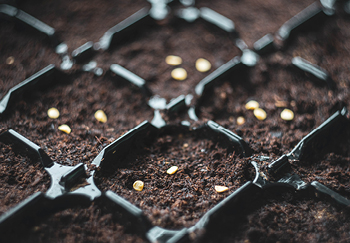
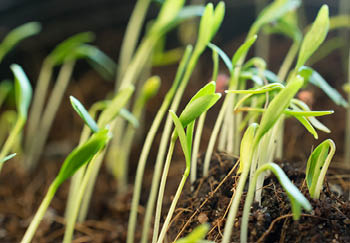
Transplanting Your Seedlings
Now your seedlings can be moved to their final container or beds in the greenhouse. First ensure the greenhouse spot is prepared and ready. Peppers need warmth and lots of sunshine to really thrive. In a good UK summer, they could be grown outdoors in the soil in a sheltered position that still gets lots of sun. To be honest though, this is the UK, we know what our summers can be like. This fact, combined with pepper’s needs of warmth and sun, means more realistically, they’re going to be planted and grown in beds or containers inside a greenhouse or equivalent, so they can get the warmth and sunshine they need to thrive. Pepper plants are also quite delicate, so if there are heavy summer rains they can damage or even kill them.
If there are any spots in your greenhouse that get shaded through the day, consider placing your peppers in a spot where they’ll get the sun for longest. They will need a moist (but not wet) peat-free multi-purpose vegetable compost. Just like they had when you were growing the seedlings. Place this into your beds or containers. Easy. When you go to transplant the seedlings, gently dig them out of their starter containers or pots, and place them in their final spots, approximately 15cm apart. Planting them together does help, but you don’t want them too close that they can’t expand and take in lots of good nutrients to grow.
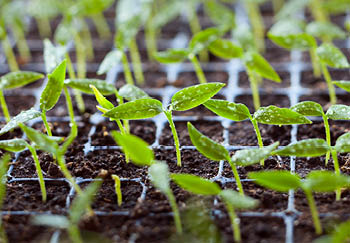
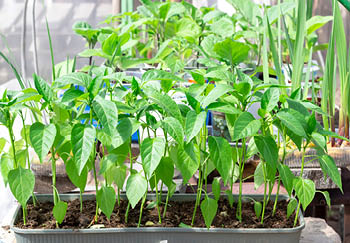
Actively Growing & Ongoing Care
The great news is that most of your work is done! Once planted, they require extraordinarily little attention. Watering is the primary thing the pepper plants will need. The soil needs to be moist but never water-logged. Aim to be consistent with your watering and do it little and often to prevent problems. Top tip: some pepper plant varieties can grow tall, above 70cm, and as peppers form, they can sag under the weight. Watch out for this ahead of time and stake them to provide support they need to keep growing and producing. Additionally, once you see the first peppers form you can add in some high-potash fertiliser that will further aid their growth and make a great crop over the growing season.
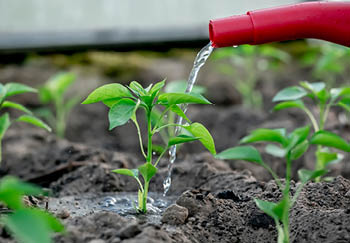
Harvesting Your Sweet Peppers
Your peppers should be ready for harvest sometime between July and September, perhaps even as last as October. Typically, greenhouses will extend the growing season. You are free to pick them when they’re green or leave them to ripen to their final red or yellow colour (depending on the variety grown) which will also give them a sweeter flavour. Another key sign of when they are ready for picking is the skin; it will be shinier. Pick with a knife or secateurs to avoid damaging the plant. Once peppers are harvested give your plants another feed with a high-potash fertiliser to encourage more peppers.
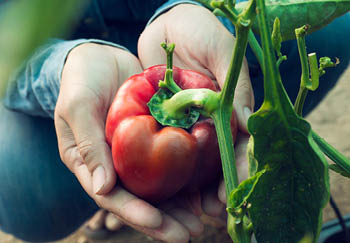
Storing Your Peppers
You can’t really store peppers although they can be frozen. They’ll keep for a few days in the fridge too. However, your best bet is to pick and eat when they are fresh. They’ll be delicious. Some peppers are well suited to being dried and then chopped or made into powders.
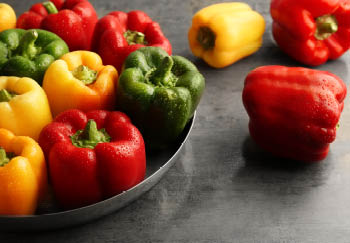
Common Pepper Problems
Like any plant and crop, peppers can suffer from some problems. Having said that, they are typically problem-free. Here’s what to watch out for though:
Red Spider or Two-Spotted Mite
Pests like these will appear in hot, dry conditions, so misting plants regularly while also watering will keep things under control. They’ll be visible as the leaves will become mottled and pale, and covered in webbing on which the crawlies will be clearly visible.
Aphids
You might be unlucky and get Aphids settling on your pepper plants. If you maintain strict control of your greenhouse, they shouldn’t be an issue. If they appear you will notice them as they’ll appear in a colony on the plant and leaves. They suck out the plant sap and excrete honeydew, encouraging the growth of black moulds. To control them, you can squash them with your finger and thumb, or use a pesticide sparingly. Ladybirds are a natural predator of aphids and you could opt for a natural method to control and get rid of them.
Blossom End Rot
This is when darker spots appear on the ends of your plants and spoil them. Watering irregularly will cause this so as detailed earlier water little and often, so the soil doesn’t dry out.
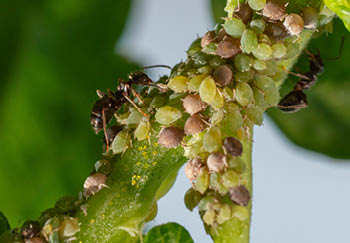


Your Own Home Grown Sweet Peppers to Enjoy
Sounds easy, right? It is! Peppers are one of the easiest plants and fruits to grow at home. The only real consideration is the warm conditions they need, but if you can sort that you’re pretty much there. You will notice the difference in flavour right away, they will be nothing like your typical store-bought peppers, some will be much sweeter and have noticeably nicer flesh. How will you use them? Pick and add to some summer salads? Sun-dry some and turn into powder? Whatever you do you’ll have a plentiful crop of wonderful home-grown peppers to enjoy.
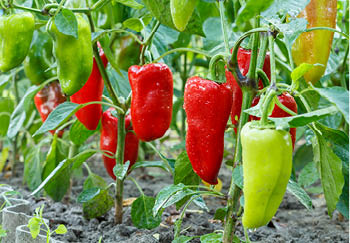
Useful Links
- Shop Online for Seeds & Bulbs
- Growing Tomatoes from Seed to Harvest (Article)
- Growing Carrots from Seed to Harvest (Article)
- Growing Onions from Seed to Harvest (Article)
- Growing Potatoes from Planting to Harvest (Article)
- Growing Chillies from Seed to Harvest (Article)
- Grow Your Own Herbs (Article)
- Grow Your Own Strawberries (Article)






